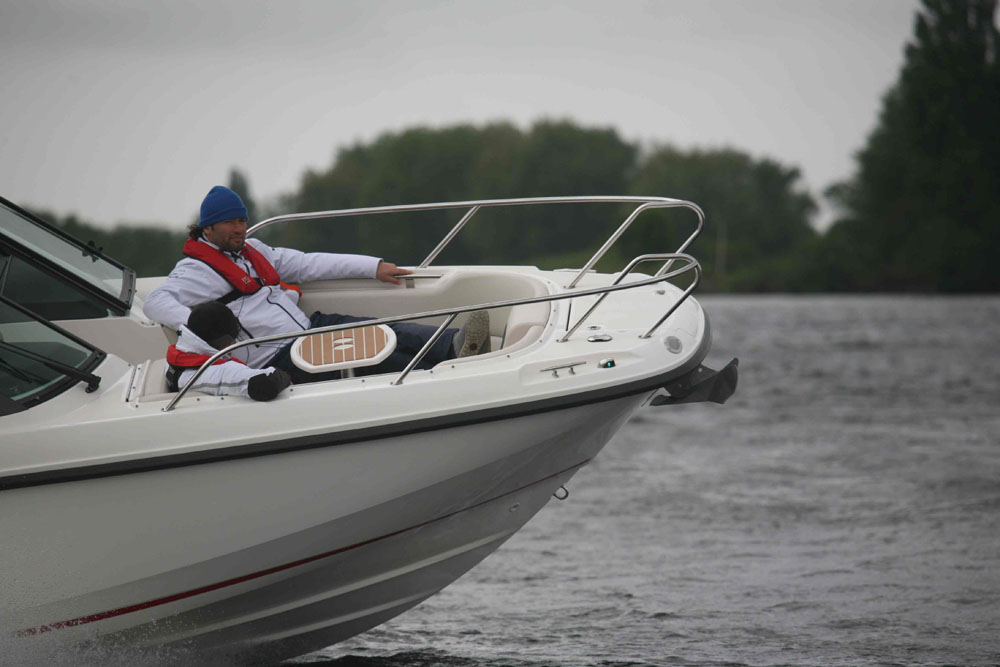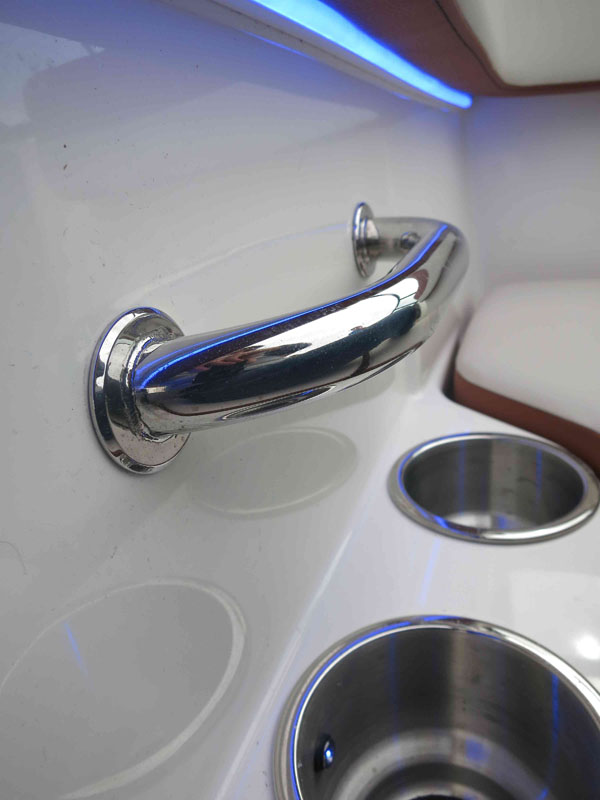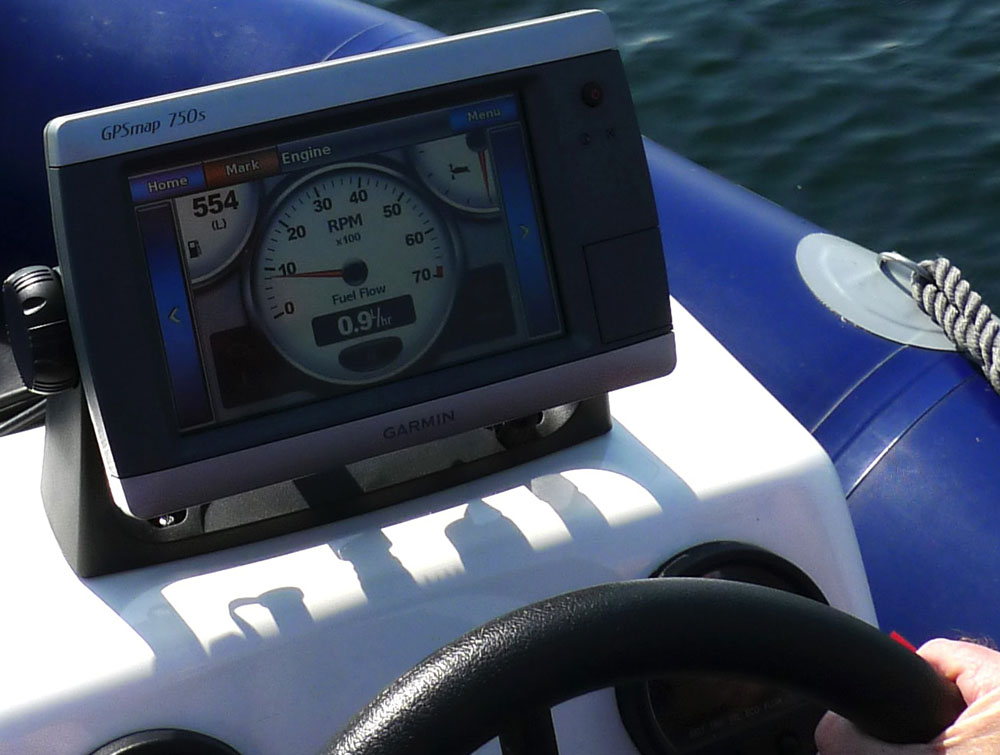How to conduct the perfect powerboat sea trial
Alex Smith explains how to get the best from a powerboat sea trial.
Once you’ve agonised over the type of boat you want and narrowed down a targeted shortlist of models, it’s time to conduct a sea trial or two. However, this is exactly the time to step back and have a think. If you go in unprepared, you’ll end up enjoying a brief boat trip, then head blithely home with a smile on your face, but no clear idea of what you actually gained from your day out. Instead, you need to work hard to achieve a position of clarity. The best way of making that happen is to adopt the same three-stage process a professional tester applies to a boat review.
Sea trial steps
- Pre-test research.
- Targeted testing.
- Post-test interrogation.
Perspective
You cannot expect to produce a fair appraisal of a boat unless you have a realistic understanding of its context. If you’re not acquainted with the price, performance, specifications and features of the average boat in a given market segment, then you will have no yardstick for assessing the values of the test craft.
Equally, it is useful to understand why a given layout tends to proliferate on a specific type of boat, because it helps you get inside the minds of the designers and understand the compromises they have chosen to make. So read around the boat type and know what to expect when you turn up on the day.
Small details
When you come face to face with the boat, be aware that the small details matter. It is frequently the case that a boat is held back by imperfect fixtures and fittings, part resolved design ideas or a makeshift layout or rigging. If you see evidence of that, you then have to ask questions of the builders.
As a professional tester of course, I often witness prototypes and new models, so that can happen a fair bit, but as a potential purchaser, you should not buy an imperfect boat on the basis of promised improvements. On the contrary, if a builder fails to put a decent boat in front of you for a sea trial then you would be very brave to expect any better on delivery day.
Of course, you have to accept that an affordable boat is built to a price. However, there is still a difference between a well-conceived means of trimming costs (for instance, plastic fixtures instead of stainless steel) and soft optioning with inappropriate materials or shoddy workmanship. So make a point of looking behind the glossy externals, inside every storage space and behind every bulkhead in a bid to discover the point at which the quality is abandoned in favour of the quick fix. The level of care lavished on the small details is often a good indication not just of the builder’s quality but also of the boat’s ability to retain its value. Pictures are vital here, so take a small digital compact so you can photograph every detail inside and out and mull it over once you’re safely back at home.

Quality wiring with organised routing and heatshrunk connectors suggest very good things about attention to detail.
Performance
As regards driving the boat, identifying and understanding the compromises is again key. A fast, efficient-running craft may be less content in a swell or in the turn, while a beamy, spacious, buoyant boat may be less capable in a head sea. So pick a day when the weather generates some modest lumps - and then put the boat (safety permitting) at every angle to the swells.
Play with the trim, the pace and the angles to assess how fast, how comfortable, how dry and how composed the boat is in each situation. This also gives you a chance to assess how much control you are able to exercise from the helm. Is the boat sufficiently responsive and dextrous to enable you to drive to the conditions? Is the helm sufficiently supportive, protective and communicative to enable you to take control and really enjoy the drive? And are there any peculiar quirks in the handling? If a fast boat gets a little skittish, you may not mind but do you really want to be teetering on the ragged edge while your wife and kids quiver with fear?
You should also make some performance notes. It doesn’t take long (perhaps five minutes) and it provides you with an objective yardstick for lucid comparison. Simply run the boat at 500rpm increments from 1,000 rpm up to the top end, taking readouts of fuel flow and Speed Over Ground. You can then calculate the best cruising range in the comfort of your living room with nothing more than the fuel tank capacity and a calculator. From these basic figures, you can also extrapolate what kind of long-term economy you can expect to see – a vital (if occasionally surprising) truth for a happy and well-informed boat purchase.
Key questions after a sea trial
- Is the boat well presented on the day of your sea trial?
- Does it feel safe and secure at sea?
- Is the layout effective for the boat type?
- Is the standard package sufficient for your needs?
- Are the customising and upgrading options intelligently conceived?
- Is the build good enough for the market segment?
- Does the attention to detail inspire confidence?
- Does the builder/dealer appear to care?
- Is the price good value in its market context?
- Are your questions satisfactorily answered?
Summary
If you get your research done early, you can approach a sea trial with a set of questions, doubts and expectations that can be directly addressed. Be educated, be rigorous, make notes, take photographs and do not commit to a decision until every last doubt or query has been properly resolved. You might only spend two hours on the boat itself, but getting to a stage of measured, contextually relevant clarity may take another 40 or 50 hours of thought, reflection and interrogation. Yes, I know it sounds like a lot of effort (and it is) but if it lands you with the right boat, it’s time well invested.
For more boat buying advice, see our features on buying a boat, surveys and which powerboat is right for you.




















